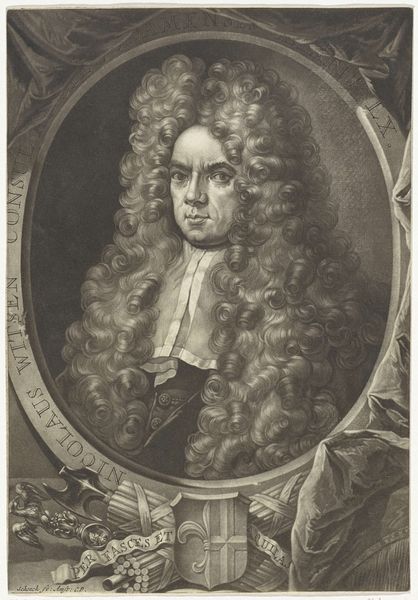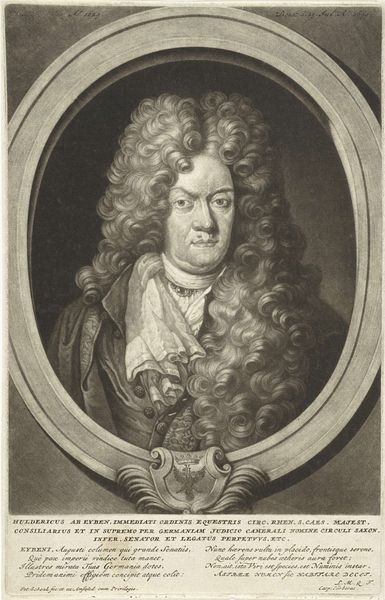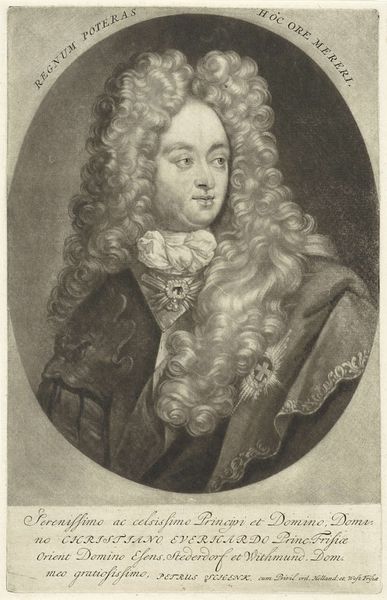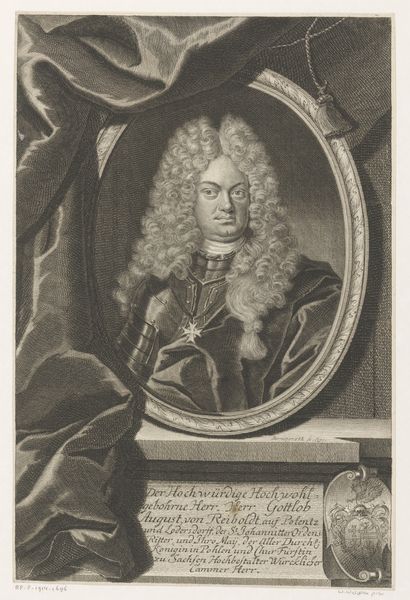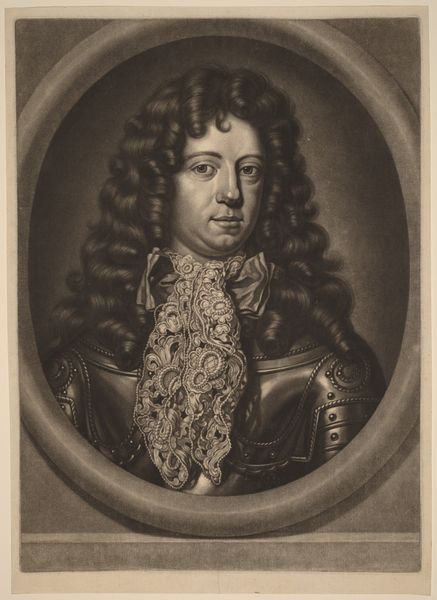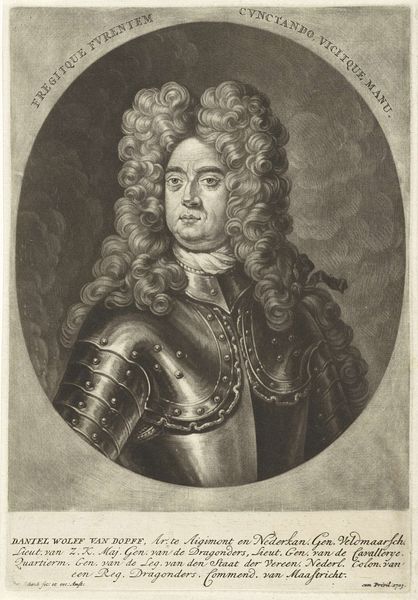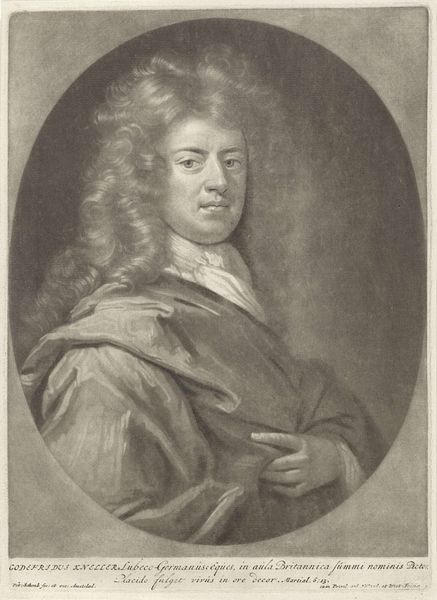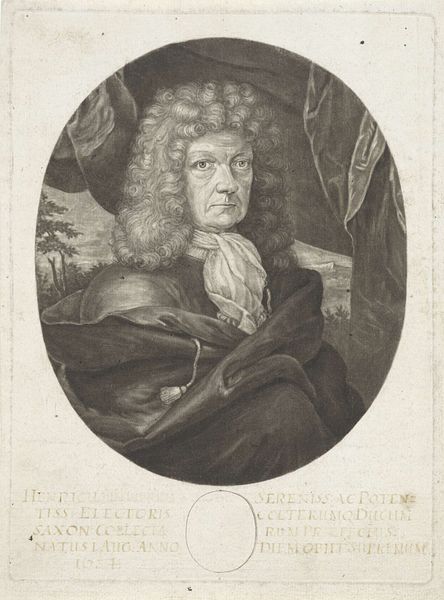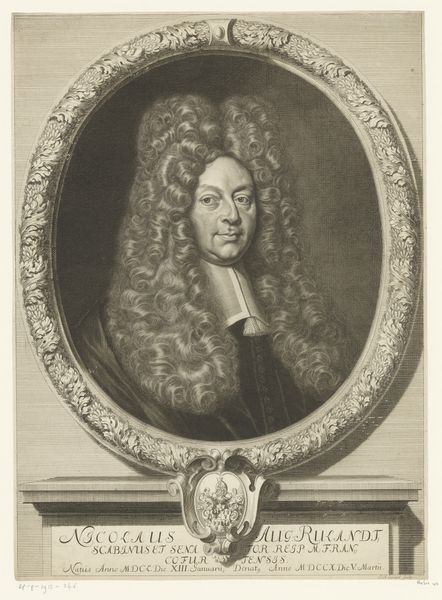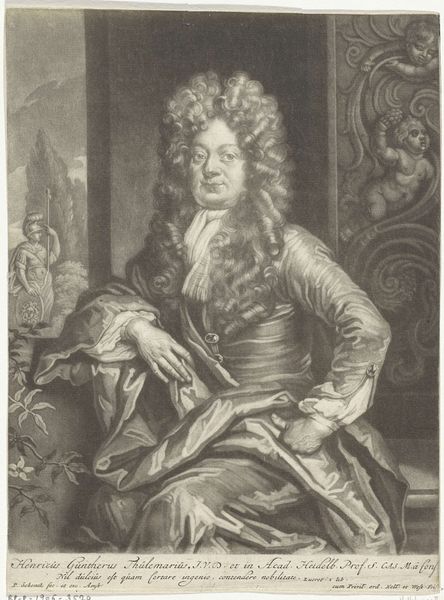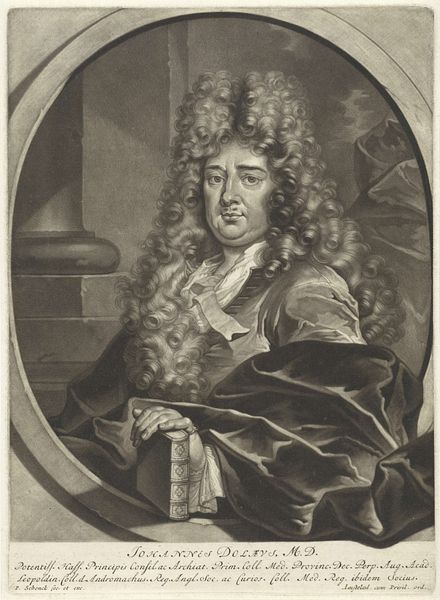
#
wedding photograph
#
photo restoration
#
wedding photography
#
charcoal drawing
#
charcoal art
#
historical photography
#
portrait reference
#
unrealistic statue
#
old-timey
#
19th century
Dimensions: height 333 mm, width 244 mm
Copyright: Rijks Museum: Open Domain
Editor: Here we have Pieter Schenk's 1701 engraving, "Portret van Nicolaes Cornelisz. Witsen," currently at the Rijksmuseum. It’s incredibly detailed! What stands out to me is how the artist rendered Witsen's elaborate wig and the luxurious velvet robe. What aspects of the materials and production draw your attention? Curator: The *means* of production are very telling here. Consider the labor involved in creating the paper itself, the etching plates, and the process of making numerous prints. It wasn't just about artistic skill; it involved an entire industry of skilled laborers and a complex network of distribution. This suggests that Witsen, as the subject, had access to vast networks of financial capital, both to obtain such materials and to promote the production of an engraved portrait of himself. Does the composition suggest anything about how Schenk viewed the societal structures? Editor: That’s fascinating! So, you're suggesting that even the seemingly mundane aspects like paper and ink speak volumes about power dynamics? I hadn’t thought about it that way. The print seems to emulate a painting, attempting to elevate a common printing method to something 'fine'. Curator: Exactly. And let's not forget the symbolic weight of the materials themselves. Paper became a medium for propagating Witsen's image and political power, almost like currency! Also, examine his garb; his robe and gesture speak of wealth and an aristocratic position achieved by access to such networks of wealth. Now how does Schenk subtly subvert this illusion through the materiality? Editor: Maybe by the *limitations* of the material itself. Engravings, though reproducible, still require a certain level of skill and precision. I think you may be pointing towards how, despite the potential for mass production, the quality and distribution still depended on skilled artisans. And that tension highlights, to a degree, how power, even back then, can’t fully remove itself from dependencies. It sounds like materials can tell quite the story! Curator: Precisely. Considering how materials are deployed within their societal conditions enables a deeper understanding beyond just aesthetics. It encourages questioning the production chains. Editor: This perspective really highlights the role of not only the artist, but the craftspeople involved in this art's creation, thank you.
Comments
No comments
Be the first to comment and join the conversation on the ultimate creative platform.
